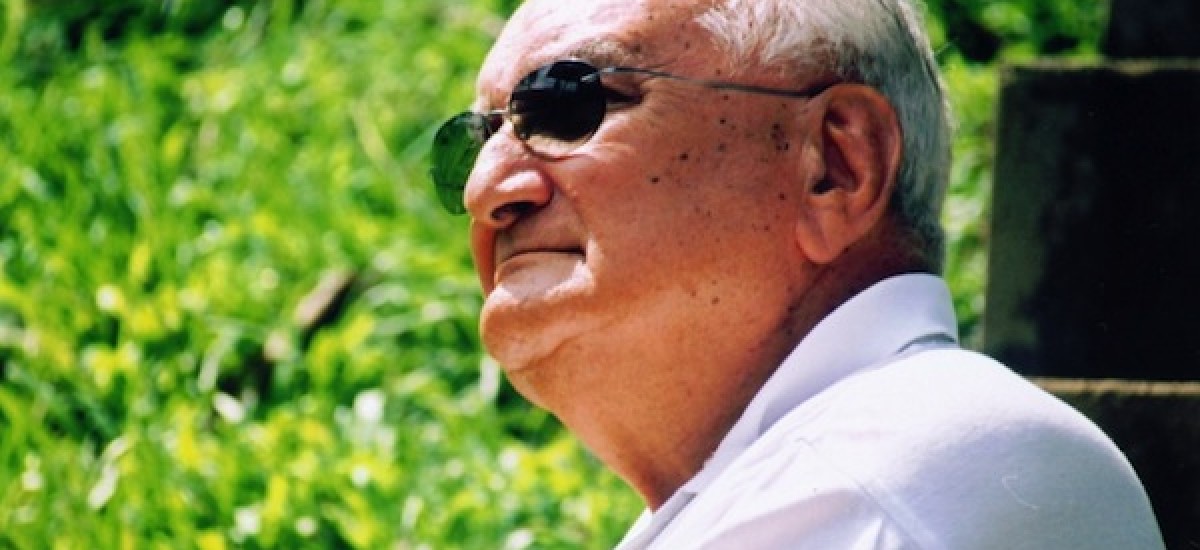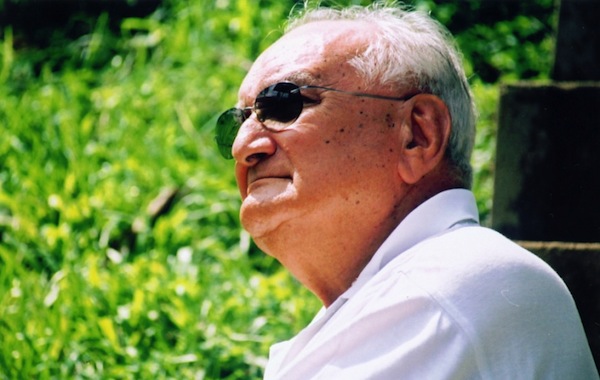Image courtesy Moving Images, Moving People!
One day in year 2005, Ray visited the University of Moratuwa as the chancellor. I think it was an official meeting to organize an innovations exhibition showcasing the work done by the students. After the meeting, Ray wanted to visit my laboratory located in the Sumanadasa building. I was a bit scared to show it to Ray, because it was full of junk material bought to make field robots. The research lab had no windows. So it was a bit damp and smelly too. He just smiled when I warned him of such possible disappointments. No sooner he entered; he grabbed a chair, sat, and kept looking at the work in progress of a legged robot like a child being mesmerised by a favourite toy.
“Why legs? Why not wheels Thrish?” he asked.
I knew that he was trying to test me. I said “simply because they have to move on soft terrains in a typical abandoned minefield”.
“So you thought about how legs deform soft soil to its advantage, when the wheels pile up stuff ahead of it making its movement more difficult!”
Then he looked at the ink pen in my pocket and said “Thrish, I also use an ink pen. Maybe we share the same reason.”
I said, “yes, because ball point pens need a force against the paper to write, when ink pens just need to be slipped on the paper. One feels less tired to write with ink pens”
I realized that Ray had a lot to show me from the way he looked at me. The he said “you should come to see my little garage Thrish. We should have a deeper conversation.”
That is how we started to talk. He had a fascinating garage. It was a place full of things he had made. He showed me how dragon flies can stay hovering in the air, how helicopters work, how coffee grinding machines work,.., and it was a full dose of mentoring from a mature innovator to a toddler who just happened to be a senior lecturer at University of Moratuwa. More than engineering approaches to solve problems, Ray taught me why a simple mind is beautiful and why inspirations from nature are important, and why sustainable solutions that fits well with all things in the environment matters.
One day we planned to go to Anuradhapura to see some Unmanned Aerial Vehicles (UAVs). He was in fact looking for ways to get Government permission to fly his toy UAVs. He had such an obsession with flying things.
He wanted me to come early in the morning to his place to have breakfast before heading up North. It was a wonderful morning and Ray decided to have breakfast with me in the garden right next to the replica of the Sandakada pahana (moonstone).
“Thrish, do you know that this is an exact replica of the one at Vatadage?”
“How did you make the mould?” I asked. In fact I wanted somebody to do a high resolution 3D laser scan of all important ruins like Gal Vihara, Samadhi statue, Sandakadapahana, etc, so that a 3D computer model can be kept for use at some future point when restorations have to be done without augmenting the original artistic value.
He smiled and explained me how to make moulds from paper pulp.
“Do you know what Sanadakada Pahana means?”
I told him my guess.
“The outer flames represent suffering. Then, the next convoluted vines reflect the ignorance we have about the five kandas, and the animals represent the manifestations of that ignorance in attachment to sense pleasures, hatred, greed,.., and the swans represent the wisdom needed to separate the defilements from dharmatha, the laws of nature, and the final lotus represents the enlightenment we see once these defilements are removed.”
Then he added, “what you don’t have here is the four steps to represent the four noble truths, and the eight steps to represent the eightfold path.”…every conversation with Ray was philosophical. How Ray so the environment and man as one inseparable unit inspired me a lot. Harmony was a keyword Ray always used. As I can remember, somewhere in Chilaw, a junction had a statue of Buddha and Jesus Christ on the opposite sides of the road. Ray pointed at it and said “that Thrish is what we call maturity. Peace always comes to mature people”. It made a permanent imprint in my memory.
On the way North, he asked me if I knew about farming. I said my grandparents were village farmers before my parents migrated to the city to attend universities.
“Thrish, do you know that I am a farmer than an engineer?”
“Ok, tell me what you like most about farming”, I gave a prompt.
“What I like most about it is the opportunity to see what sustainability means” Ray started to give a series of examples that included why farmers trim branches of trees to bring more sunlight to the smaller plants, why they grow plants that shed leaves rich in Nitrogen, and why ancient engineers built Yoda Ela along a level contour perpendicular to feeders of water so that the dry zone gets an aquatic stabilizer, etc.
After leaving the country in 2007, I kept in contact with him through emails. He cherished so many memories about Cambridge, Massachusettes, and Harvard University. He was very happy to hear that I was doing a fellowship there. He reminded me of his tractor story. Apparently it had been at Harvard Business School somebody had asked him if he tried to mechanize the buffalo or envisioned to provide a solution that the buffalo cannot provide. Then he told me how that question made him think why it is important to consider agriculture in its entirety before providing mechanized solutions.
I think what we can do to honor Ray is to think of teaching the next generation of Sri Lankan engineers to approach innovations with sustainability in mind. Gro Harlem Bruntland, former Prime Minister of Norway defined sustainable development as “development which meets the needs of the past without compromising the ability of future generations to meet their needs”. I wish to modify it slightly to “Development that manages human needs and finds new means to achieve them with minimum restrictions on future generations to manage their needs and means to achieve them”. For instance, finding more humane ways to keep and resettle internally displaced people without reckless rush nor lethargy to resettle them (managing the need) and innovating good ways to detect and remove landmines without scraping the thin fertile top soil layer in the North or without having to cut and burn the vegetation (finding means to achieve the needs without causing trouble to future farming communities by handing over an eroded land) is one example I can give. Here, we have to view the whole problem of innovation in an inclusive process that starts from a humane objective of taking care of the internally displaced people and to think about their future needs to use the land for farming before moving into local technological innovations to serve humanitarian demining.
A later version of the field robot that Ray saw in my laboratory back in 2005 was donated to the Kothalawala Defense University for further improvement and possible deployment. One of the Sri Lankan students who later worked on the project recently gave me the great news that he started a spin-off company in the US to provide improved metal detectors for humanitarian demining. My first masters student who worked on the project later became a professor in a US university. Ray’s encouragements and thoughtful mentoring made a trickle-down impact on many of our lives.
Author bio: The author is a senior lecturer at King’s College London. He has been a research fellow at Johns Hopkins University, Harvard University, and a research affiliate of the Computer Science and Artificial Intelligence Laboratory, MIT, prior to joining Kings’ College London. While he was in Sri Lanka, he served as a senior lecturer in the University of Moratuwa and the commissioner of the Sri Lanka Inventors’ Commission.


